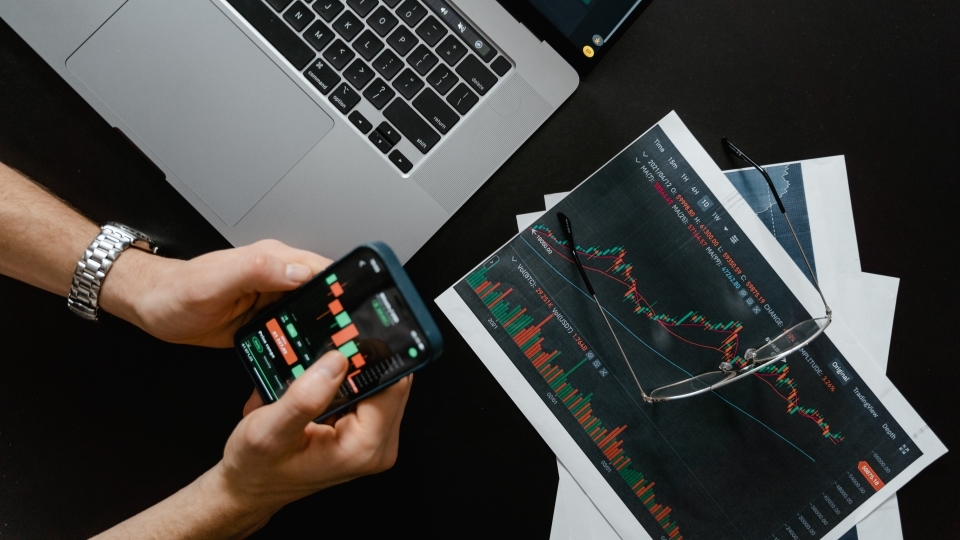Stubborn Core Inflation, Surging Job Market Cloud Outlook for Fed
February 6, 2023
- Author
- Jay Pfeifer

On Wednesday, the Federal Reserve raised interest rates by 0.25 percent, marking the eighth straight increase since March 2022.
In his press conference, Chairman Jerome Powell was quite clear that the Fed was likely to continue increasing interest rates, and that the battle against surging prices was far from finished.
Nevertheless, American stock markets pounced on the news, seeming to read the Fed’s actions as a light at the end of a tunnel.
The disconnect is hard to miss. How can markets respond optimistically to a measured but downbeat Fed report? We connected with Davidson College Economics Professor Vikram Kumar for his take.
First, how are you interpreting the Fed’s actions? Are we seeing signs that inflation is under control?
If we were on a plane, we would be on a descent. But the visibility is poor. And the hard part–the landing–is still ahead.
There’s no question that there has been a substantial reduction in headline Consumer Price Index (CPI) inflation and headline Personal Consumption Expenditures (PCE) inflation. That's good news.
And I think that's what the markets are reacting to. But that may also be a somewhat superficial reading of the reality. I think the low-hanging fruit of tight conditions has been harvested.
If one digs in a little bit, the core inflation rates have not changed quite as much. Core CPI inflation was 5.9 percent in June, and 5.7 percent in December. Core PCE was 5 percent in June and 4.4 percent in December.
We are still far away from the Fed's two percent inflation target. And closing that gap is where the heavy lifting is going to come.
Where can the Fed move the needle?
Service sector inflation will be the real challenge. Inflation on goods is actually in retreat; the core goods inflation readings for the past three months have been negative. But service-intensive sectors, like hospitality and travel where wages are central, have not declined.
Eating at restaurants has become more expensive, but it hasn't prevented people from going to restaurants. People still go to get their hair done, they still go to nail salons–and pay higher prices. I think that's the real issue.
People haven’t cut back on those yet and until they do, prices will continue to rise.
Just two days after the Fed’s decision, the latest job reports showed the lowest unemployment rate since 1969. How can the economy seem to be moving in two directions?
It's paradoxical. There is really no suggestion that the labor market has been negatively affected.
Obviously, one wants the labor market to do very well. But in this case, the inflation problem is now tied in with the labor market tightness. And so, I think the Fed's job is now going to be as much political as it is technical or clinically policy-based. Because once you introduce slack in the labor market, it’s going to bring economic, and therefore, social discomfort.
I think the Fed actually missed an opportunity to raise the rate by 50 basis points Wednesday. That would have been an unambiguous decision that showed clearly the Fed was really serious about tightening the economy.
The Fed has to navigate this situation with a great deal of sensitivity. And in Powell’s press conference, he went out of his way to say that the Fed's actions are in the service of the public good. I interpreted that as him trying to get ahead of potential bad news a little bit.
Despite his remarks, the markets went up after the press conference. What are they seeing?
The thing about the markets is that they start dancing before the music comes on.
The Fed says there are going to be tight conditions for an extended period of time or for the foreseeable future but the markets are behaving as if the rate cut is imminent. And it’s just wishful thinking.
Strangely, the indexes are going up. Interest rates on mortgages have come down. And there is a comprehensive index from the Chicago Fed that indicates that national financial conditions have become easier.
But that makes the inflation more difficult to contain. If financial conditions are easing, that pours a little bit of gasoline on the inflation fire. In theory, at least, it weakens the Fed's ability to get the job done. It may need to increase interest rates by more for longer.
The Fed chair is insisting that there's a long way to go before we arrive at the end point. But the market is acting like we are almost home.



